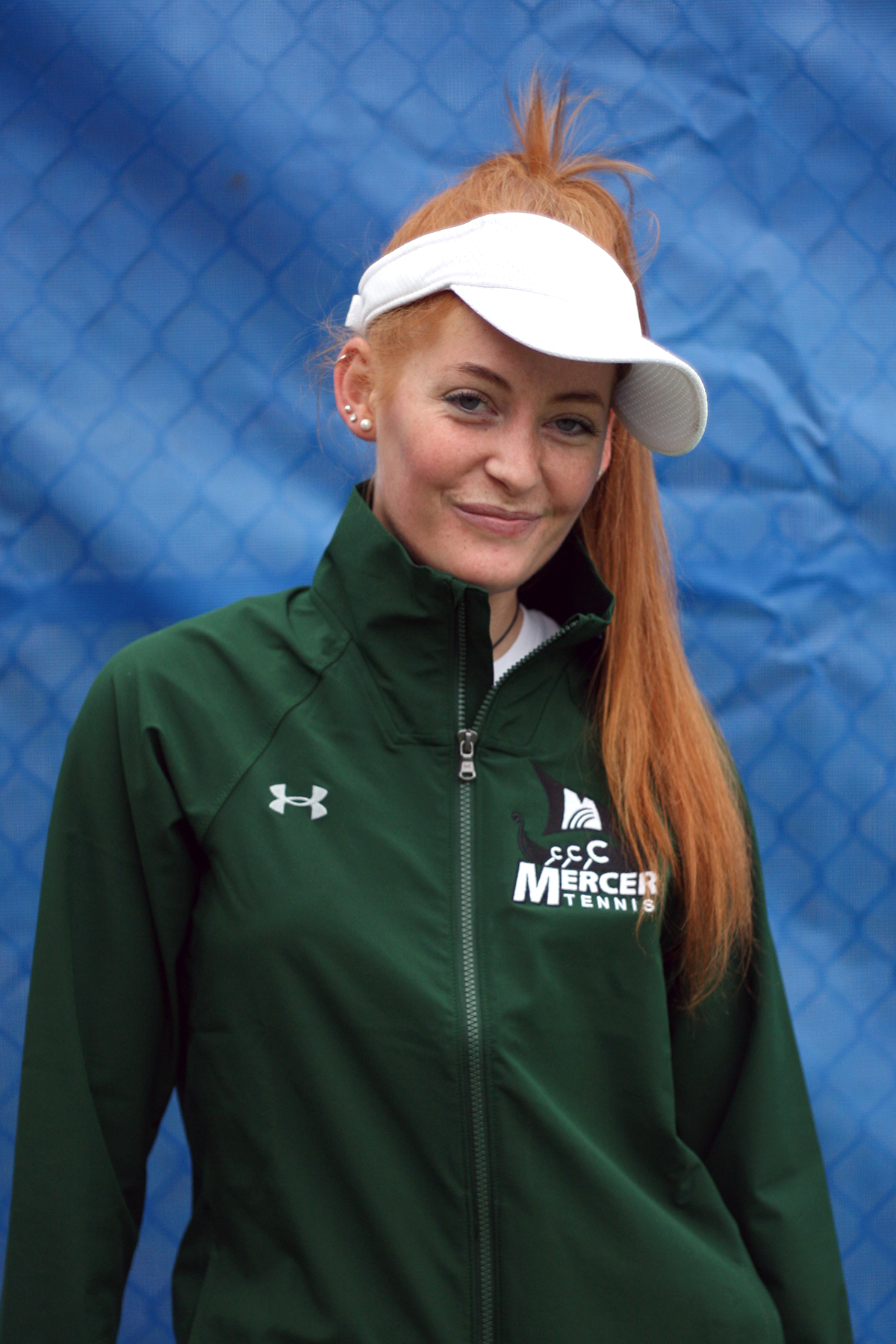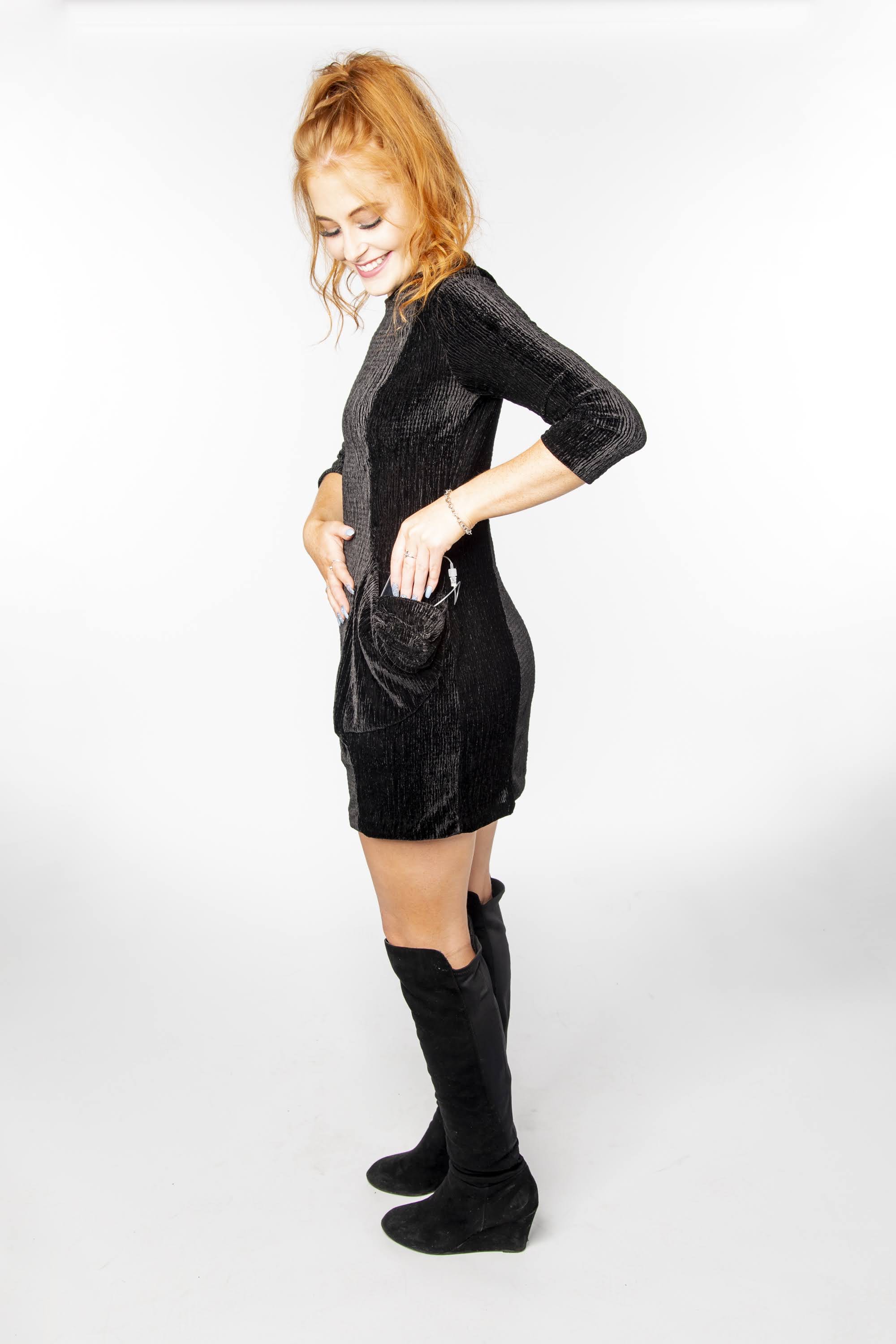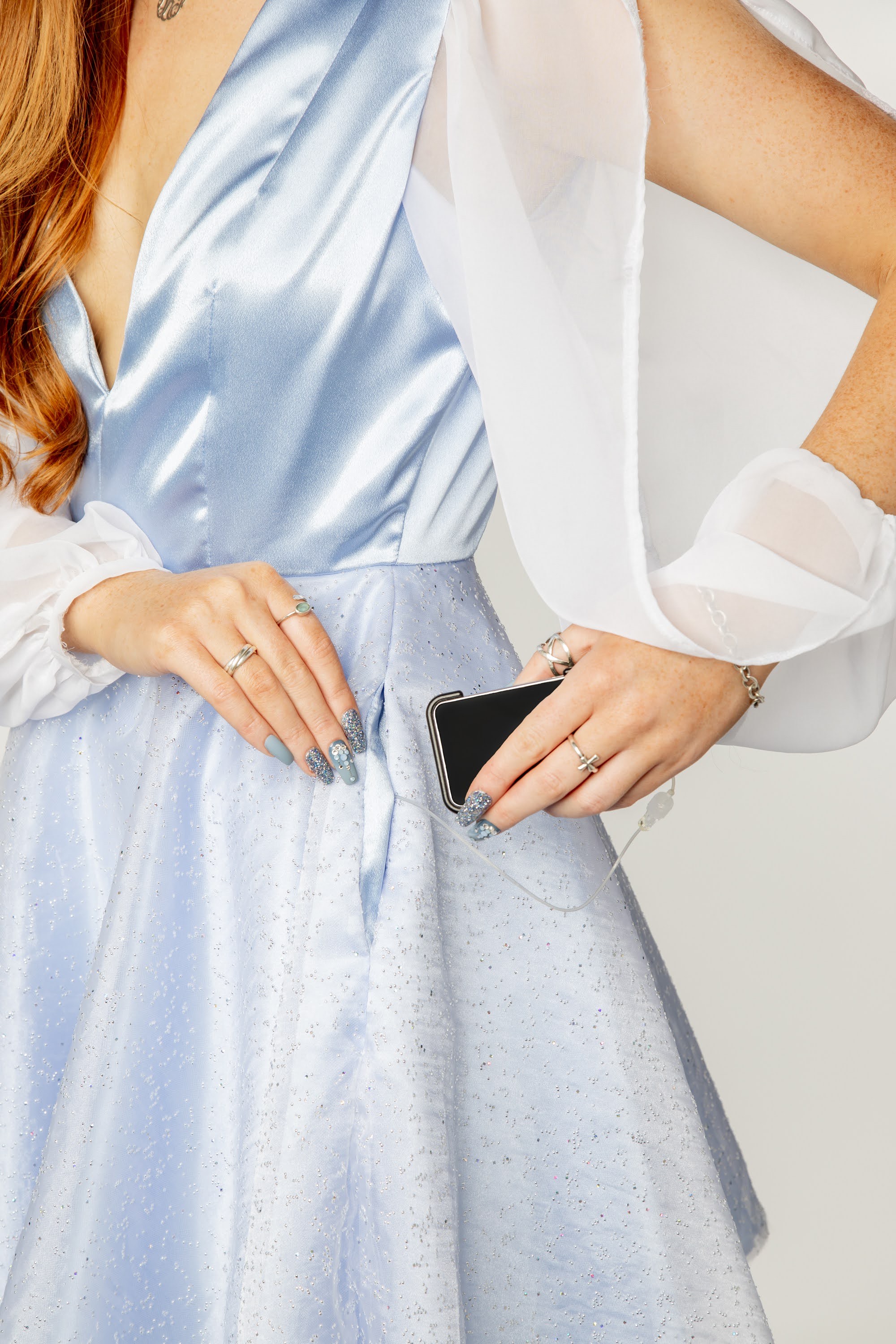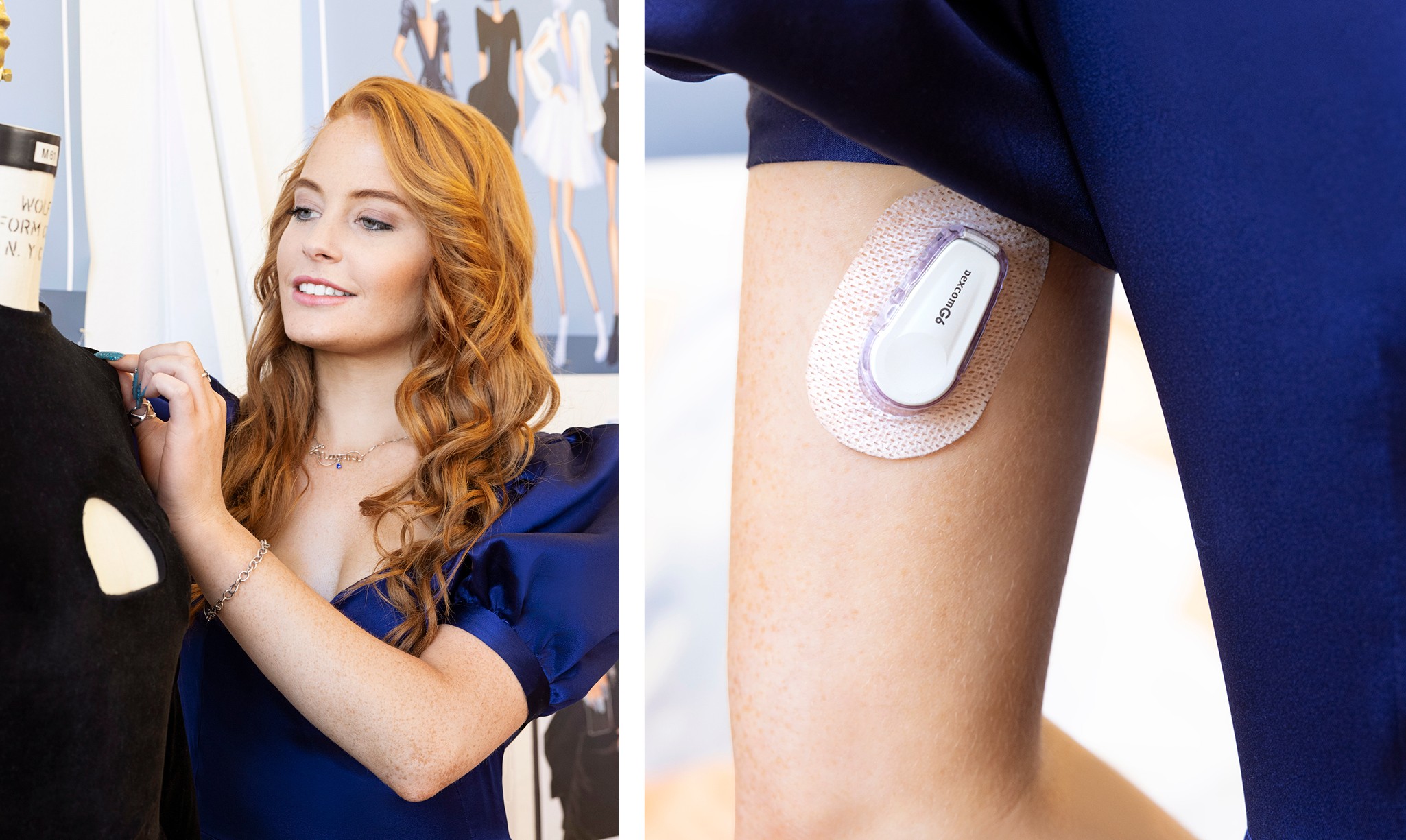Athletics Alumni Spotlight
Naomi Kinnamon, Women's Tennis
9/7/23
Former tennis player Naomi Kinnamon (Pennington, NJ/Hopewell Valley), a member of the 2019 MCCC women’s tennis team, did not have the typical route into college athletics. While at MCCC, Kinnamon’s good friend Sofia Stepanoff was on the women’s tennis team which was trying to recruit more players to field a full scoring team. Kinnamon decided to go out for the team and learn a sport she had not previously played.
Being new to the sport did not take anything away from Kinnamon’s experience as she has great memories of her one year playing tennis and of her coaches and teammates. “My favorite thing about playing tennis at Mercer is not exactly a memory, but the overall friendly and accepting environment that lasted the entire season. As a new player, everyone was very welcoming and encouraging towards me. Coach Marc (Vecchiolla) was so encouraging and friendly and fostered such a positive atmosphere. I cannot say enough positive things about all of the players and coaches. Everyone was willing to help me out and give me pointers. It made my tennis career, while short lived, worthwhile and one I’ll never forget.”
Kinnamon knew fairly early on in high school that she wanted to start her college career at MCCC. “Since about junior/senior year of high school, I knew I was going to start my collegiate years at Mercer County Community College. While in high school, I wasn’t exactly sure what I wanted to major in yet, I wasn’t particularly drawn to any four year college or university, and just picking one while shelling out lots of money didn’t feel right. Plus, there were the continued sage whispers from my dad and mom of “Well at Mercer”, and “If you go to Mercer”, and finally “When you attend Mercer”. I knew then and I know now that it was the right decision for me because Mercer is where I figured out what I wanted to do next, while being exposed to so many awesome subjects, people, and opportunities.”
Following her two years at Mercer, Kinnamon transferred to Savannah College of Art and Design or SCAD as students refer to the art and design school in Georgia as. Kinnamon developed an interest in fashion at an early age thanks to her family. “Fashion design is a skill that I have been interested in since childhood. I made my first skirt when I was in the first grade. This is because sewing is a family trade and passion that has been passed down through my family for years now. I learned so much from my mom and two aunts, who learned from their mother and aunts. Over the years we would work on projects together like my first quilt, pajamas, a tote bag, and numerous two piece sets. Until I went to fashion school, these ladies taught me everything I knew and always encouraged the fine arts.”
Kinnamon’s interest in fashion coupled with a personal challenge she faces daily led her to design clothes that accommodate insulin pumps. Kinnamon is a type 1 diabetic and discussed how she came up with the idea to make fashionable clothes that help hold the insulin pumps. “I don’t exactly remember having a ‘Eureka!’ moment for this idea, but I am sure it was only a matter of time. I was going into my final year at SCAD where I would be designing and creating a collection completely my own. The summer before this year, we had to research and come up with three possible collection ideas. At this point I had been wearing an insulin pump for many years and struggling with garments to wear. I think at some point it just sort of clicked. I came up with three, but once I had the idea for the pump-accommodating garments, I knew that was going to be the one I went forward with. The focus has been womenswear because I personally wear women's clothing and have experienced the need, but also because I know other women struggle with some of the same issues. Womenswear doesn’t usually have pockets to fit a phone, much less an insulin pump. My garments fit a phone, even the iPhone 14 Pro Max. I am hoping to cater to all women who want pockets, not just women with type 1 diabetes. Menswear, generally speaking, has functional pockets and waistbands, though I see myself looking into menswear needs in the future. I am starting with eveningwear over casual or activewear because that has been the most problematic for me because again, dresses, jumpsuits, rompers, or anything fitted doesn’t tend to have pockets or waistbands to clip the pump to.”
This is far from the only challenge Kinnamon faced as a diabetic. “Participating in athletics with an insulin pump had been continuously tricky for me to navigate throughout my athletic career. I was diagnosed with type 1 diabetes in the sixth grade, where I was already participating in school and club athletics. Since the insulin pump I use needs to be attached securely to the wearer at almost all times, it can be hard to run and jump and move around without it becoming dislodged from a pocket or waistband. Throughout middle school and high school I was a soccer goalie and spent much of my time diving for balls and landing right where my pump would need to sit. So for almost all of my soccer years I would just take off the pump and keep it in my bag during games, check my blood sugar at halftime and give myself insulin if necessary, throw the pump back in my bag and run back out onto the field. This wasn’t by any means ideal, but there was no way I could concentrate or play properly when I was also worried about my pump coming loose. The same went for my time as a tennis player. Even though I wasn’t spending as much time on the ground, that much movement would often dislodge my pump from my waistband or pocket.”
Kinnamon indicated that athletic wear that accommodates an insulin pump could certainly be something she could work on in the future. “I definitely think there is a need for accommodating activewear. I recently bought a pair of activewear pants that while tight and compressed, are too thin or stretchy for my pump to even stay clipped to the waistband! Perhaps that means something needs to change in the pump clip design, I don’t know. I have experienced similar occurrences even with activewear that does have side pockets for phones. When you are actually being active and working out, the pump often slips out. It is definitely something for me to consider down the line.”
Kinnamon discussed what goes into designing clothes for diabetics who rely on an insulin pump. “The process for designing these clothes is a lot different than any other collection I have designed. Rather than starting with an image or pattern or environment that inspires silhouettes and colors, I am starting with a specific goal: to make a women’s eveningwear collection that accommodates insulin pumps. So I feel that my design process is kind of backwards. The insulin pump is always going to dictate the silhouette and fabric. If I am placing this chunky device somewhere, it has to sit somewhere comfortable because I am so done with the days of clipping it to my bra or underwear and having it be uncomfortable all day long. Plus, there is the tubing to be mindful of. The pump has to be in a place that sits comfortably on the body and is in range of the tubing. Next there is fabric. Something light and silky is not going to naturally support the weight of the pump. So there is a lot that dictates my decisions before I have even designed something. It has taken a lot of creative problem solving and testing to see what works and what doesn’t. In addition to this, one of my biggest goals from the beginning has been to not create clothes that I could easily wear with an insulin pump, like a big poofy skirt, but to create clothes that I have otherwise never been able to wear. I am talking bodycons (tight-fitting clothing), fitted dresses, fitted jumpsuits, fitted anything because I don’t want having to wear an insulin pump to mean having to hide or cover up my body. This leads me to another important point of my line. It isn’t to hide the insulin pump because of embarrassment or self-consciousness. It is to provide a proper place for it in the garment so that the person can go about their day just being comfortable for once! The real point is to design for people who have never actually been designed for in the mainstream. This is a huge market of people that have simply been left out of the process.”
Kinnamon looks to continue with fashion design and hopes to launch her own clothing line. “Almost as soon as I had the idea, I saw the very real potential for turning this school assignment into an actual brand. There are millions of people with type 1 diabetes and many use insulin pumps. I was sure I couldn’t be the only one experiencing the daily frustrations of not having proper clothing to fit my needs. Since graduating, I have been working on turning this idea into a brand. I have currently set up shop in my parent’s basement and am refining the looks from school that I liked, as well as creating a few new ones. We are hoping to be manufacturing soon!”
While the fashion designing took place at SCAD, Kinnamon is very grateful for her time and MCCC and how it helped her figure out what career she wanted to pursue. “Mercer is where I was able to take the time and realize what I really wanted to do next. And it wasn’t because I was taking fashion design classes there. I was a Liberal Arts major and was taking all of the gen eds (general education requirements) I could. I was also continuing to take many fine arts classes, as I had since high school. I think having the opportunity to discover what I didn’t want to study, helped me realize that I could turn my real interests (art, design, sewing) into a future, and I do credit my time at Mercer for that.”
Kinnamon’s story shows that you never know where your start at MCCC can take you. In Kinnamon’s case, her journey at Mercer started in the classroom and on the tennis court and has taken her to the design lab and workshops and maybe someday soon to the fashion runway!

Kinnamon on the 2019 women's tennis team

Kinnamon modeling her insulin pump fitting clothing

One of the dresses Kinnamon designed to accommodate an insulin pump

(photo courtesy of SCAD)
Kinnamon with another dress she designed to accommodate an insulin pump

(photo courtesy of SCAD)
Kinnamon with a continuous glucose monitor (cgm)